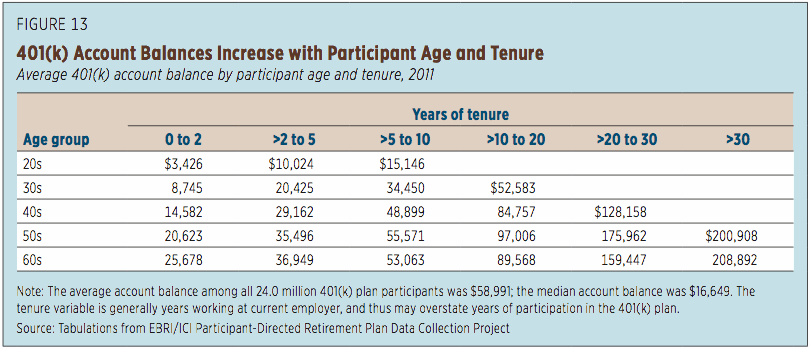MetLife Announces Expected 2012 Results and Guidance for 2013
MetLife, Inc. today announced its expected results for the full year and fourth quarter 2012 as well as financial guidance for 2013.
Full Year 2012
MetLife expects to earn between $5.5 and $5.6 billion from operations in full year 2012, up 19% from $4.7 billion in 2011. The company also expects a 2012 operating return on equity of 11.0% to 11.1%, up from 10.1% at year-end 2011.
MetLife estimates full year 2012 operating premiums, fees & other revenues of between $47.3 billion and $47.7 billion, up 5% from $45.4 billion in 2011.
Fourth Quarter 2012
Included in the full year 2012 operating earnings estimate are expected fourth quarter 2012 operating earnings of between $1.2 billion and $1.3 billion ($1.12 per share and $1.22 per share), compared with $1.2 billion, or $1.17 per share in the fourth quarter of 2011.
Book value per share, excluding accumulated other comprehensive income, at year-end 2012 is expected to be between $46.97 and $47.41, up from $46.69 at year-end 2011.
2013 Guidance
MetLife expects 2013 operating earnings to be between $5.5 billion and $5.9 billion ($4.95 to $5.35 per share).
“While our operating earnings per share are expected to be lower in 2013 than in 2012, they are broadly consistent with what we predicted a year ago for an extended low interest rate environment,” said Steven Kandarian, MetLife’s CEO.
Per share calculations for full year and fourth quarter 2012 are based on 1,073.9 million and 1,085.4 million shares outstanding, respectively. Per share calculations for 2013 are based on 1,110.4 million average shares outstanding.
Extreme Makeover: Thrivent Edition
Thrivent Financial for Lutherans, the largest non-governmental supporter of Habitat for Humanity International, has committed $6.8 million in 2013 for the construction of 113 Habitat for Humanity houses across the United States.
Thrivent and its members have committed more than $180 million and more than 3.5 million volunteer hours to the home-building organization since 2005.
Thrivent maintains three programs with Habitat for Humanity: Thrivent Builds Homes, Thrivent Builds Worldwide and Thrivent Builds Repairs. These programs allow Thrivent Financial to partner with Habitat and low-income families in the construction, repair and rehabilitation of affordable housing in communities in the U.S. and abroad. More than 2,900 homes have been built in the United States and around the world with the Thrivent Builds program.
The programs also allow volunteers to pick the level of commitment they’re comfortable with, from week(s)-long international builds to simply a few hours with a Thrivent Builds Repairs project in their own community.
Advisors of unmarried couples need better planning software: FPA
The Financial Planning Association Diversity Committee has released the Diversity Software Functionality for Financial Planners Executive Summary, which focuses on the ability of current financial planning software to support the needs of America’s changing demographics.
The report cites U.S. Census data that shows increases in the numbers of unmarried couples sharing a residence. The number of opposite-sex couples who share the same residence jumped 13% and the number of same-sex couples living together increased 30% over two years time.
Financial planners say that traditional financial planning software doesn’t meet the needs of the unmarried couples they work with. The majority of FPA survey respondents said that they would switch to a targeted software package to help them best assist this population. The survey showed:
71% of advisors currently provide financial planning services to couples that are unmarried and/or in same-sex relationships and most financial planners expect an increase in same-sex couples.
55% of advisors want software that will give them accurate calculation of benefits for non-spouse beneficiaries for qualified plans and IRAs.
52% of advisors want software to allow for different drawdown percentages on a couple’s aggregated portfolio.
50% of advisors want software that models the tax impact for asset transfer (estate equalization with a new couple or in the event of separation) or estate planning for unmarried and same-sex couples.
‘Stark contrast’ between 1st and 2nd wave Boomers: Cogent Research
Not all Boomers are alike, according to Cogent Research.
According to Cogent’s latest Investor Brandscape report, based on a survey of over 4,000 affluent Americans, Second Wave Boomers (ages 48-56) are more aligned with younger investors in attitudes, beliefs, and behaviors than with First Wave Boomers (ages 57-66).
Over half of first-wave Boomers are fully (48%) or semi-retired (9%), while only 9% of second-wave Boomers are retired and 3% are semi-retired. As a result, 81% of second-wave Boomers still own an employer-sponsored retirement plan (ESRP) (up significantly from one year ago), compared to just 57% of older Boomers.
With more emphasis still being placed on retirement savings, fewer second-wave Boomers report having an advisor (63% v. 66% for first-wave Boomers) with a smaller share of their assets being managed by advisors (46% vs. 52%). If they work with an advisor, second-wave Boomers are less satisfied (58% vs. 69%) with them.
Mutual fund companies have higher brand recognition among older first-wave Boomers, who also maintain a significantly higher number of mutual fund relationships than second-wave Boomers, on average.
“The financial services industry has spent the better part of a decade treating Boomers as a single and cohesive group,” said Meredith Lloyd Rice, Cogent Research senior project director and author of the study. “These new findings suggest companies need to take another look.”
Towers Watson’s mortality study covers experience at 21 life insurers
Towers Watson has the released The Older Age Mortality Study 3 (TOAMS 3), the company’s third study of U.S. life insurance industry mortality and the longest-running study of older age mortality experience in the market.
TOAMS 3 spans the five-year experience period from 2006 to 2010 for insureds attained ages of 50 and above. The 21 participating companies provided $8.2 trillion of face amount for 48 million policy years.
Over 700,000 deaths in the study represent $40 billion of death claims. The study was performed on an issue age and duration basis, using a 25-year select period, consistent with the Society of Actuaries 2001 and 2008 Valuation Basic Table (VBT).
“The low interest rate environment has placed downward pressure on life insurers’ profitability. Insurers have had to reprice many products with profit streams vulnerable to low interest rates, heightening the need for greater pricing accuracy. Our study gives insurers the tools to address trends in life expectancy and fine-tune their pricing assumptions,” said Elinor Friedman, director, Life practice, Towers Watson.
Key findings of the study include:
- Overall, mortality is 62% of the 2001 VBT by face amount and 75% of the 2001 VBT by policy count. Experience as a percentage of the 2008 VBT showed higher percentages (83% by face amount, 90% by policy count).
- Male nonsmokers have considerably more exposure and a higher average face amount than the other gender/smoking status combinations.
- 76% of the exposure by face amount was in the two highest bands ($250,000 and higher), while 81% of the exposure by policy count was in the four lowest bands (up to $250,000).
- The predictive model analysis shows that expected mortality levels by plan are not as large as the traditional analysis would suggest, indicating that other correlated variables explain the difference.
Security Benefit expands advisor support in DC Channel
George M. Beale and Jeffrey D. Kayajanian have joined Security Benefit Corporation’s Defined Contribution team. As field vice presidents serving the western United States, they will work closely with advisors who sell and service defined contribution plans in the ERISA marketplace with a focus on 401(k) plans.
The move is part of Security Benefit’s ongoing initiative building an independent distribution structure focused on advisor business models and affiliations, the company said in a release.
Beale, based in Denver, has more than 20 years’ experience in sales and regional sales management of 403(b), 457 and 401(k) plans, working previously at Securities America, MetLife, ING and Security First Group.
He has a Bachelor of Science in Finance from Arizona State University.
Kayajanian, based in Solana Beach, Calif., was formerly a divisional vice president of Hartford Retirement Plans Group. He has also served as National Sales Manager at State Street Research and was a Regional Vice President for ReliaStar Retirement Plans. Earlier, he was affiliated with AXA/Equitable Annuities and Guardian Life.
Kayajanian holds a degree in business administration from California State University, Fresno, and a Master of Business Administration from Pepperdine University.
© 2012 RIJ Publishing LLC.


 The RMA program didn’t work out—more on that later—and Golden left MassMutual. But he has since launched
The RMA program didn’t work out—more on that later—and Golden left MassMutual. But he has since launched 


